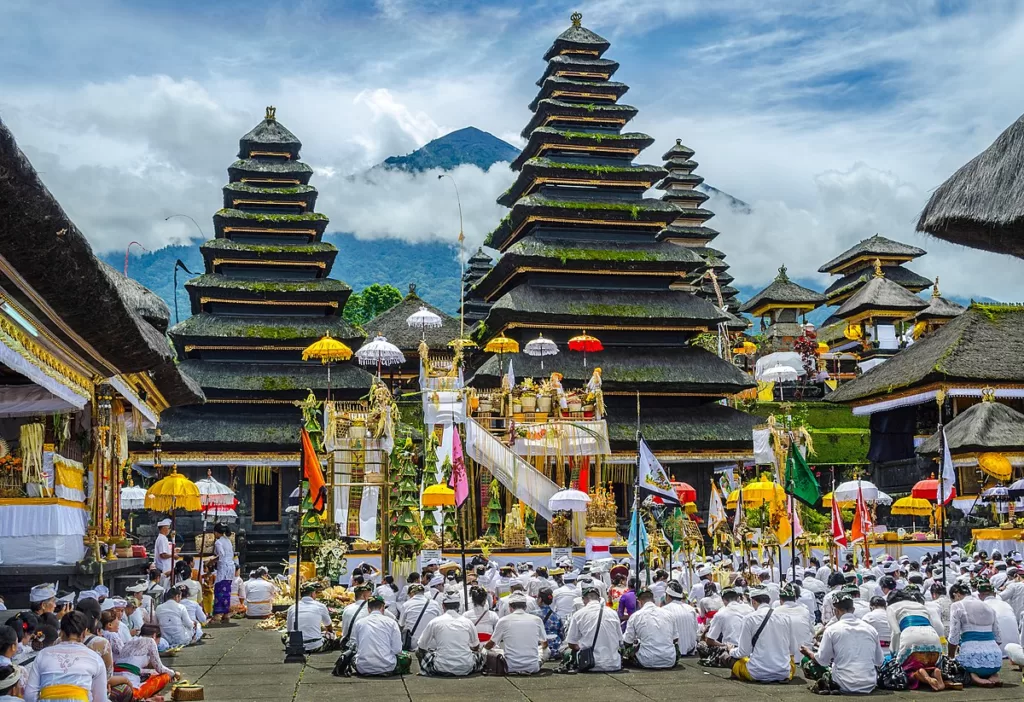Introduction: Tracing the Evolution of Tourism in Indonesia
Indonesia, an archipelago blessed with natural beauty and cultural diversity, boasts a rich history intertwined with the development of tourism. The journey of tourism history in Indonesia offers a kaleidoscopic view into how global influences and local endeavors transformed the nation into a prime tourist destination.

Early Encounters: Pre-Colonial Tourism Interactions
The Indonesian archipelago has been a crossroads for global travelers for millennia. Ancient trade routes brought merchants from India, China, and the Middle East, fostering cultural exchanges and laying the seeds of future tourism. Indigenous travel traditions also flourished. For instance, pilgrimage practices to sacred sites were common among local communities, serving as early examples of spiritual tourism.

Colonial Era: The Foundations of Organized Tourism
The Dutch East Indies, spanning the 17th to the 20th centuries, played a pivotal role in molding Indonesia’s tourism landscape. The colonial rulers developed infrastructures, such as railroads and hotels, which inadvertently facilitated tourism. Moreover, the colonial administration organized expositions in Europe, showcasing the exotic beauty and culture of Indonesia, thereby piquing the interest of European travelers.
Post-Independence Era: Birth of Modern-Day Tourism
In the aftermath of independence in 1945, the newborn nation sought to promote its national identity and economic growth. The establishment of the national airline, Garuda Indonesia, in 1949, not only connected the archipelago but also brought international tourists. Additionally, the government launched initiatives to promote regions like Bali and Jakarta as flagship tourism destinations.
Bali Emergence: A Cornerstone of Indonesian Tourism
By the 1970s and 1980s, Bali emerged as a global tourism sensation. Its unique blend of pristine beaches, vibrant culture, and spiritual serenity attracted tourists worldwide. Ubud became the cultural heart, celebrating traditional dances and crafts. Meanwhile, regions like Seminyak and Kuta evolved as hubs for beach tourism and nightlife, further propelled by global media exposure.

Tourism in the Late 20th Century: Diversification and Challenges
While Bali remained a magnet, efforts to promote alternative destinations gained traction. Places like Lombok, Sumatra, and Sulawesi began to see more tourists. However, the latter part of the century presented challenges, from economic downturns to political instability, affecting tourism influx.
21st Century: Digital Era and Sustainable Tourism
With the advent of the internet and social media, the promotion of Indonesian tourism underwent a revolution. Remote islands and hidden beaches became Instagram favorites almost overnight. Parallelly, the rising global concern for sustainability echoed in Indonesia. The nation embarked on initiatives emphasizing eco-tourism, preservation of cultural heritage, and responsible tourism practices.
Major Events Influencing Tourism
Throughout its tourism journey, Indonesia has weathered numerous global events. Natural disasters like the 2004 tsunami and volcanic eruptions, as well as global recessions, left significant imprints. Yet, with every setback, Indonesia displayed resilience, introducing recovery strategies, including rebranding campaigns and infrastructure development, to rejuvenate its tourism industry.
Cultural Tourism: Indonesia’s Rich Tapestry
Indonesia’s cultural richness offers a plethora of tourism opportunities. Traditional dances like the Javanese Ramayana ballet or Balinese Kecak draw tourists seeking authentic experiences. The nation’s commitment to preserving its heritage is evident in the UNESCO World Heritage Sites, such as the Borobudur Temple, which have significantly boosted cultural tourism.

The Future of Tourism in Indonesia: A Forward Look
Indonesia stands on the cusp of a tourism renaissance. The government’s forward-looking strategies, such as the “10 New Balis” initiative, aim to distribute tourism evenly across the archipelago. Furthermore, emerging trends like wellness tourism and adventure travel are set to shape the future of Indonesia’s tourism landscape.
Conclusion: Reflecting on the Rich Tapestry of Indonesia’s Tourism History
The historical trajectory of tourism in Indonesia showcases a dynamic interplay of global influences, national endeavors, challenges, and evolution. As we reflect on its past, it becomes clear that Indonesia’s tourism potential remains vast, promising a future filled with exploration, cultural encounters, and sustainable growth.
Resources and References: Delving Deeper into Indonesian Tourism History
For those intrigued by Indonesia’s tourism saga, several resources provide a deeper dive. Books like “Bali: Sekala & Niskala” by Fred B. Eiseman Jr. offer insights into Balinese culture, while documentaries such as “Ring of Fire: An Indonesian Odyssey” chronicle personal explorations of the archipelago. Numerous blogs and articles further trace the nuanced development of tourism in Indonesia, enabling travelers and enthusiasts to appreciate the nation’s journey in its entirety.

